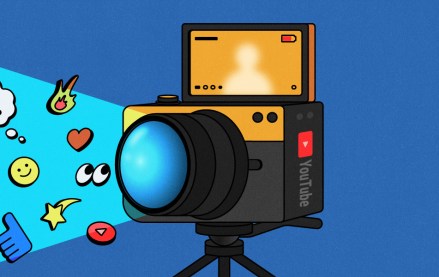Candy giant Butterfinger doubles down on gaming with streamers and creators to reach younger audiences

Candy brand Butterfinger is making a bigger bet on gaming, increasing its media spend this year on gaming creators and streamers to boost brand awareness with younger shoppers.
“We were looking to figure out what is the best way to reach millennials and Gen Z,” said Neal Finkler, vp of marketing for Butterfinger and Baby Ruth at Ferrero Group. “Gaming is obviously huge.”
The candy brand’s initiative, dubbed “Game Better with Butterfinger,” targets millennial and Gen Z gamers. This year, the brand is working toward what Finkler called an “always-on presence,” increasing Butterfinger’s paid media investment for the program by almost 60% over last year to keep up volume and engagement all year round, as opposed to around key promotional moments, he said. (Finkler declined to outline specific ad spend and media investment details.)
That investment is being spread across efforts to build out Butterfinger’s creator network and retailer partners, per Finkler. With creators this year especially, Butterfinger is looking to set up a consistent roster of year-round partnerships, in an effort to increase brand visibility on a more regular basis through the brand’s internal team and agency partners. At the end of this month, for example, Butterfinger is teaming up with Square Enix, the video game company behind the “Final Fantasy” game franchise. Through the collaboration, players can receive in-game content, watch Butterfinger team players’ livestreams on Twitch and enter a sweepstakes.
As people spend more time online, Butterfinger has been shifting its spend and efforts accordingly. More specifically, the brand has recently shifted away from linear television advertising and toward things like streaming ads, social media and, of course, gaming.
From January to November of last year, Butterfinger spent nearly $40 million on media, according to Vivvix, including paid social data from Pathmatics. That figure was significantly up from the $24.4 million spent during the same time period in 2022. According to MediaRadar, Butterfinger’s online video ads captured 54% of its spend in 2023, followed by linear television at 40%, leaving the remaining 6% to be split among other media channels, like display or paid social.
Historically, Butterfinger has partnered with gaming streamers on Twitch, including Mark Johnson, who goes by Gorillaphent on social media and has more than 94,000 Twitch followers, and Curiousjoi, a Twitch ambassador with more than 17,000 followers. In 2022, Butterfinger teamed up with video game “PUBG Mobile” to offer in-game items.
“Not only does this allow us to increase our ability to support them more often, but fosters those long-term, meaningful relationships that allow us to stay at the heart of gaming culture and brings so much value to our brand,” Finkler said in an email to Digiday.
It’s an initiative that’s been building momentum since 2020, two years after Butterfinger was sold by Nestlé’s U.S. confectionery business to Ferrero, a manufacturer of branded chocolate and confectionery products. At the time, Butterfinger as a brand was declining, even becoming the subject of several Change.org petitions concerning the candy bar’s recipe. Since then, Butterfinger has grown its social presence and brand, and now reaches more than 1.5 billion gamers, according to a spokesperson for the brand.
Brands have long since been leveraging gaming as a means to market to younger shoppers. Last year, the gold rush of esports was starting to wane following scrutiny from investors and struggles to turn a profit. (Read an in-depth analysis of the esports winter here.) The so-called esports winter is ongoing, but the weather is letting up with brands re-entering the space, including carmaker Kia’s sponsorship of a “League of Legends” Championship Series and Butterfinger’s increased investment in gaming streamers.
It makes sense, according to Charlie Wade, global executive director of growth and innovation at VML Commerce. Increasingly, younger generations are turning toward gaming for entertainment and community, according to recent research from Deloitte. “I expect more money to keep flowing in from the consumer perspective, because there’s no sign that it’s going to slow down,” Wade said.
And where consumers spend their time, brands are right behind. Gaming ad spend hasn’t caught up with the likes of social or connected television, but it’s growing, according to AdExchanger. U.S. ad spend on video games totaled $8.6 billion in 2022. In comparison, advertisers spent $56 billion on social media and $18.9 billion on CTV ads. Per AdExchanger, video game ad revenue grew by 7% in 2022 compared to 2021.
However, because gaming can be a community-driven space as opposed to a passive entertainment activity, brands should be very clear about what their presence looks like in these spaces, showing up in games authentically rather than just on digital billboards, Wade said.
“We’re trying to show ways that companies can collaborate into gaming,” he said. “Creating short-form games or creating your own games or gamifying commerce experiences is also another way for brands to look at this. There’s just lots of different avenues and lots of different ways in.”
Taking a collaborative approach is something that Butterfinger is keeping top of mind as the candy brand continues to expand its investment and footprint in the gaming space, per Finkler. “We found out that gamers first and foremost, follow streamers and influencers which expose them to new game titles and brands, not the other way around,” he said.
More in Marketing

Digiday+ Research deep dive: Brand marketers grow their YouTube spending while agency marketers cut back
When it comes to social media marketing, YouTube doesn’t always get as much attention as its Meta, TikTok and X counterparts. But brands are actually increasing their marketing spend on the platform. It turns out it’s a different story for agencies, though.

Amazon, Apple, Oracle rumored to be potential TikTok buyers if ByteDance is forced to sell
The rumor mill is in full force despite ByteDance stating it would rather shut down the app in the U.S. than sell it.

Walmart and Roblox are teaming up to make virtual e-commerce a reality
Roblox first teased the launch of e-commerce during November’s Roblox Investor Day, and the Walmart experience is a pilot test that will run through the month of May. During the pilot test, Roblox will not receive a cut of item sales, with all revenues going directly to Walmart.








